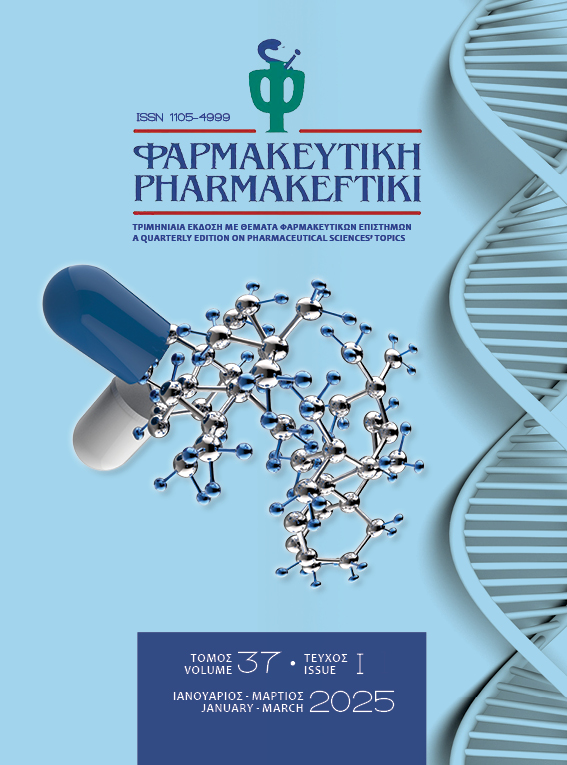Research of Empathy Indicators of Ukrainian Pharmacy Professionals
DOI:
https://doi.org/10.60988/p.v37i1.30Keywords:
empathy, pharmacy professionals, professional activity, pharmaceutical careAbstract
The paper is dedicated to the investigation of key indicators of empathy among pharmacy professionals in Ukraine, and its structural elements. It has been established that pharmacy professionals, in whom the sense of empathy is better developed, are sensitive to even the smallest social manifestations, which helps them better understand the people and greatly improves the quality of pharmaceutical aid provided. It has been found that the majority of the studied specialists have an optimal level of empathy, which significantly simplifies their psychological adaptation to possible interpersonal complications related to the psycho-emotional state of others and helps to develop an optimal strategy of behavior in interpersonal communication.
References
Hoffman M.L. Empathy and moral development: Implications for caring and justice. New York: Cambridge University Press, 2000. 342 p.
Raab K. Mindfulness, self-compassion, and empathy among healthcare professionals: a review of the literature. J Health Care Chaplain 2014;20(3):95–108. doi: 10.1080/08854726.2014.913876.
Latif A, Pollock K & Boardman HF. The contribution of the medicines use review (Mur) consultation to counselling practice in community pharmacies. Patient Educ Couns 2011;83(3):336–344. doi: 10.1016/j.pec.2011.05.007.
Kim SS, Kaplowitz S & Johnston MV. The effects of physician empathy on patient satisfaction and compliance. Eval Health Prof 2004;27(3):237–251. doi: 10.1177/0163278704267037.
Barnett N, Varia S & Jubraj B. Medicines adherence: are you asking the right questions and taking the best approach? Pharm J 2013;291:153–156. doi: 10.1211/PJ.2013.11126181.
Batt-Rawden SA, Chisholm MS, Anton B & Flickinger T. Teaching empathy to medical students: an updated systematic review. Acad Med 2013;88(8):1171–1177. doi: 10.1097/ACM.0b013e318299f3e3.
Jubraj B, Barnett NL, Grimes L et al. Why we should understand the patient experience: clinical empathy and medicines optimization. Int J Pharm Pract 2016;24(5):367–370. doi: 10.1111/ijpp.12268.
Kunyk D & Olson J. Clarification of conceptualizations of empathy. J Adv Nurs 2001;35(3):317–325. PMID: 11489011.
Koller I., Lamm C. Item Response Model Investigation of the (German) Interpersonal Reactivity Index Empathy Questionnaire Implications for Analyses of Group. Differences. European Journal of Psychological Assessment, 2015. Vol. 31, no. 3, pp. 211-221. doi: 10.1027/1015-5759/a000227.
Duan, C. Being Empathic: The function of Intention to Empathize and Nature of Emotion. Motivation and Emotion. – 24(1). – 2000. – P. 29-49.
De Corte K., Buysse A., Verhofstadt L.L., Royers H., Ponnet K. Davis M.H. Measuring empathic tendencies: reliability and validity of the Dutch version of the Interpersonal Reactivity Index. Psychologica Belgica, 2007. Vol. 47 (4), pp. 235-260.
Mehrabian, A., & Epstein, N. (1972). A measure of emotional empathy. // Journal of Personality, 40(4), 525–543. https://doi.org/10.1111/j.1467-6494.1972.tb00078.x.
Davis M.H. A multidimensional approach to individual differences in empathy.JSAS Catalog of selected documents in psychology, 1980. Vol. 10. 85 p.
Davis M.H. Empathy: A social psychological approach. Boulder, CO: Westview Press, 1996. 260 p.
Davis M.H. Measuring individual differences in empathy: evidence for a multidimensional approach. Journal of Personality and Social Psychology, 1983. Vol. 44 (1), pp. 113-126. doi: 10.1037/0022-3514.44.1.113.


